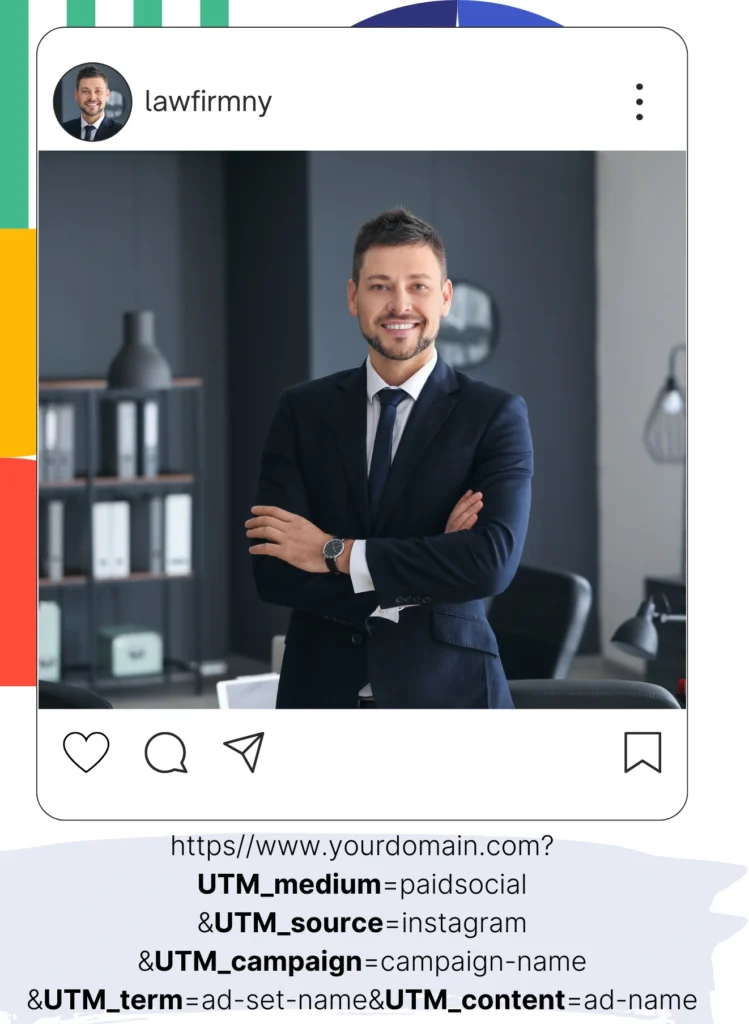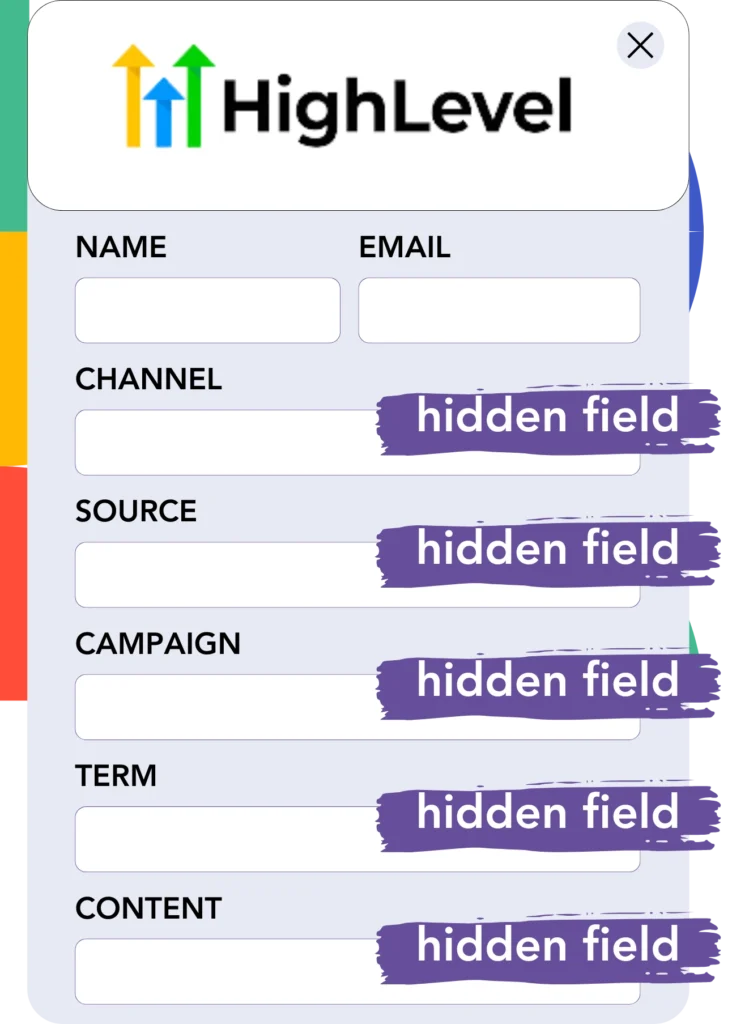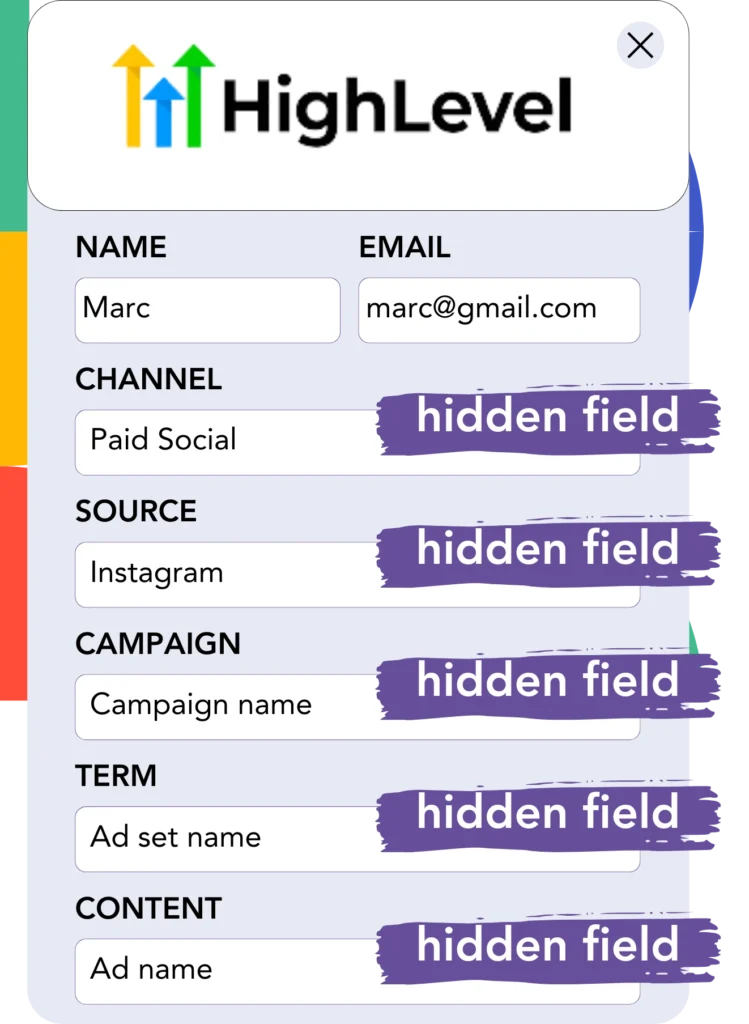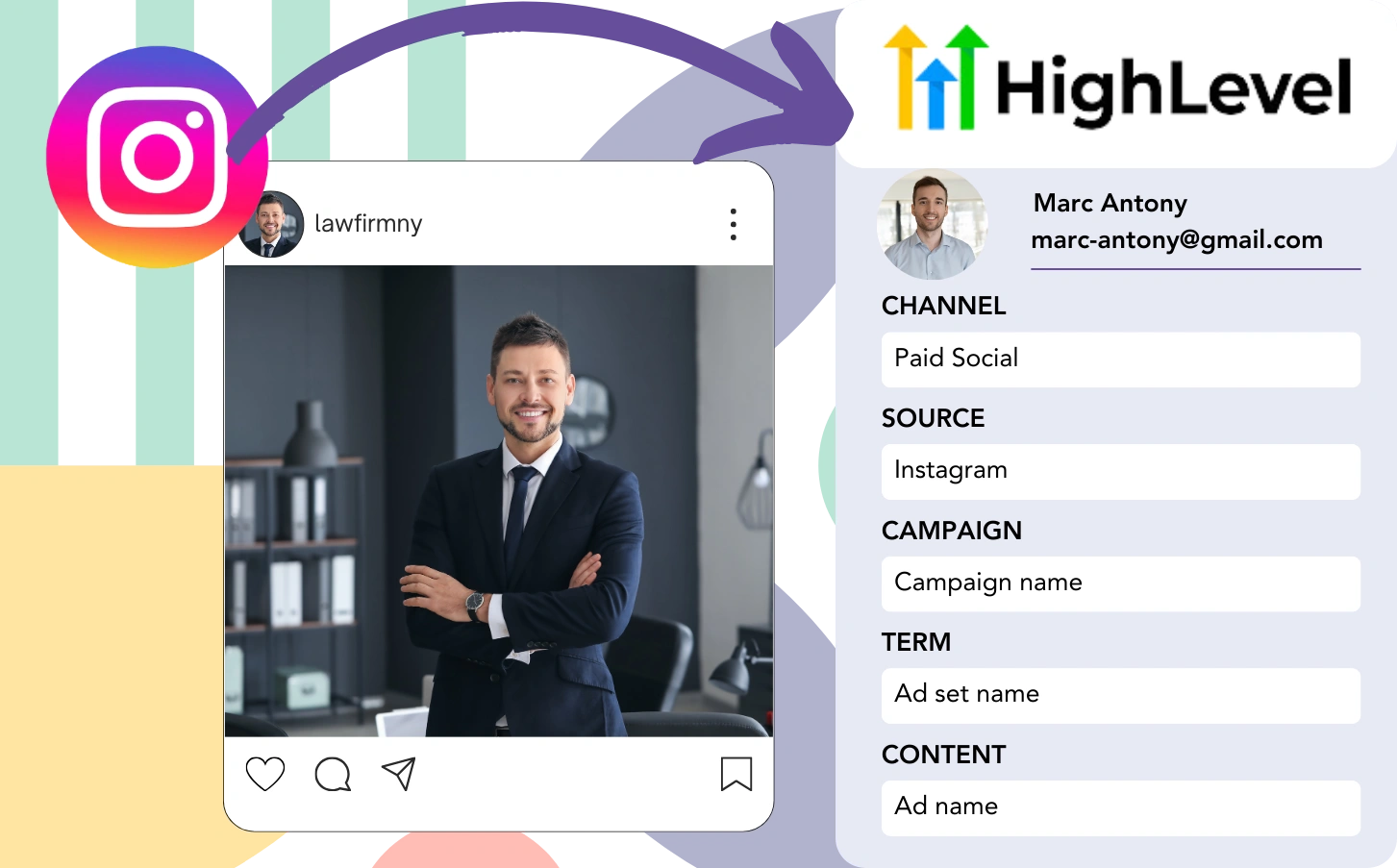GoHighLevel can capture leads from Instagram, yet there’s no option to link each lead to a distinct Instagram ad. In the same way, when a lead becomes a customer, it can’t be traced back to a specific ad.
Without this tracking, analyzing your Instagram ads success is challenging, and you can’t see which ads bring leads and customers. As a result, you spend on several ads without clarity on which ones convert.
There’s a clear approach that allows you to trace each lead back to the exact Instagram campaign, ad set, and ad it came from.
We’ll address this process, step by step!
How to track Instagram ads in GoHighLevel
Step 1: Add Leadsources in the head tag of your website

Leadsources offers an easy way to track lead sources. Once the code is added on your website, it collects up to 7 data points for each lead you receive.
➡️ Sign up to Leadsources.io for free
➡️ Add the Leadsources tracking code to your site
Step 2: Add the UTM parameters to your Instagram ads

Include UTM parameters within your ad URL to capture Instagram ad data, like campaign, ad set, and ad. Here’s an example for guidance:
UTM_medium=paidsocialUTM_source=instagramUTM_campaign=campaign-nameUTM_term=ad-set-nameUTM_content=ad-name
The final URL should appear as follows:
https://www.yourdomain.com?UTM_medium=paidsocial&UTM_source=instagram&UTM_campaign=campaign-name&UTM_term=ad-set-name&UTM_content=ad-nameKey point: Leadsources collects all source information, so tracking is thorough even without UTM parameters.
Step 3: Add the hidden fields in GoHighLevel

Hidden fields are invisible fields in a form that store data submitted along with the other form entries.
When your GoHighLevel is submitted, Leadsources automatically fills hidden fields with relevant Instagram ads data. Leadsources then stores this data directly in your GoHighLevel.
Step 4: Capture the Instagram ads data in GoHighLevel

When users engage with your ads and land on your website, Leadsources fetches the Instagram campaign, ad set, ad data, and more.
Leadsources populates the hidden fields of GoHighLevel with comprehensive Instagram ads data.
Accordingly, upon form submission, you can examine the Instagram ad data and the lead’s details in GoHighLevel.
How does Leadsources work?
Each time someone accesses your site, Leadsources fetches Instagram ad data and populates it into the hidden fields of your form. Upon submission, this data, along with lead details such as name and email, is sent to GoHighLevel.
Leadsources accounts for all of this source data for every lead:
| Lead source data | Fetched automatically |
| Channel | ✅ |
| Source | ✅ |
| Campaign | ✅ OR use UTM_campaign |
| Content | UTM_content parameter is required |
| Term | UTM_term parameter is required |
| Landing page | ✅ |
| Landing page subfolder | ✅ |
As illustrated in the table above, even when UTM parameters are not applicable—like with organic sources such as Google search or referrals—Leadsources still retains certain lead source data:
- Channel
- Source
- Campaign
- Landing page
- Landing page subfolder
Unlike other solutions, Leadsources retrieves lead sources from all marketing channels, including both organic and paid.
Performance reports: Lead, sales, and revenue by source
By accessing Instagram ad data in GoHighLevel, you can design performance reports like:
- Leads, sales, and revenue by channel
- Leads, sales, and revenue by source
- Leads, sales, and revenue by campaign (aka. Instagram campaign)
- Leads, sales, and revenue by term (aka. Instagram ad set)
- Leads, sales, and revenue by content (aka. Instagram ad)
This gives you the capability to readjust your Instagram budget based on which campaigns, ad sets, and ads bring in the greatest leads, sales, and revenue.
Let’s identify some of the reports that you can assemble:
1. Lead source reports
Create performance reports that reflect the number of leads gained through:
- Channel
- Source
- Campaign (aka. Instagram campaign)
- Term (aka. Instagram ad set)
- Content (aka. Instagram ad)
- Landing page
- Landing page subfolder
Example #1: Leads by channel
This report assists in determining the channel that drives the highest lead generation.

Example #2: Leads by Instagram campaign
You can now prioritize a particular lead source (e.g., Instagram) and assess the number of leads produced by each Instagram campaign.

Example #3: Leads by Instagram ad
Once you find the Instagram campaign that yields the most leads, you can examine which particular ad set or ad is driving that lead generation.

2. Sales and revenue source reports
Now that we understand which Instagram campaign, ad set, and ad are bringing in leads, we must check if these leads convert into sales and revenue.
To fulfill this goal, connect your leads to a CRM like GoHighLevel. This makes it possible to track sales and revenue associated with various channels, sources, Instagram campaigns, ad sets, ads, landing pages, and landing page subfolders.
By analyzing this data, you can adjust your Instagram ad strategy to focus on the channels, sources, campaigns, ad sets, and ads that produce outstanding sales and revenue.
There are multiple sales and revenue reports that you can generate, such as:
- Sales and revenue by channel
- Sales and revenue by source
- Sales and revenue by campaign
- Sales and revenue by term (e.g., Instagram ad set)
- Sales and revenue by content (e.g., Instagram ad)
- Sales and revenue by landing page
- Sales and revenue by landing page subfolder
Example Scenario:
| Channel | Search Paid | Social Paid |
|---|---|---|
| Leads | 50 | 75 |
| Sales | 5 | 6 |
| Average Order Value | $150 | $100 |
| Revenue | $750 | $600 |
Upon launching ads on both Google and Instagram, the preliminary “Leads by Channel” report highlighted that Social Paid ads (Instagram) produced more leads than Search Paid ads.
Yet, upon investigating the sales and revenue statistics in your CRM, you realized that the Search Paid channel generated more revenue while attracting fewer leads than the Social Paid channel. This led you to reassign your budget to favor the Search Paid channel.
LeadSources tracks the source of each lead in GoHighLevel, whether they come from ads, organic search, social, email, etc. and syncs that data with each submission. See the full breakdown on the lead source in GoHighLevel page.

